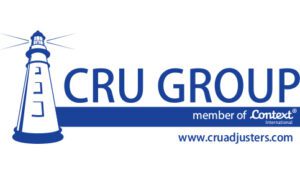Will Managed Repair Be Found in Most Property Insurance Policies?

Steve Badger claimed that many more insurance companies will be placing managed repair options into insurance policies. During our debate at the Lloyd’s Property Insurance Claims Group Conference last week, Badger seemed confident that managed repair is coming to many states. Since I have had private discussions with insurance industry insiders telling me that insurers in “hail states” are planning to follow Florida’s lead and seek approval for forms allowing insurers to designate “preferred vendors” to make repairs, Badger’s comments and prediction should be taken seriously.
Steve Badger had a retort to my skepticism about the issues normally associated with an insurance company making an election to repair and finding that it is in the construction business with long-tail liability for poor and inadequate repair. He said that the insurance claims industry is now vetting truly qualified contractors to do the repairs.
From my experience, all contractors say they are the best and do a first-rate job. Another impression is that even the best contractors have construction defects and improper workmanship issues. There is a large legal and claims industry devoted to improper and defective construction where faulty work and design may not show up for years. It is a frequent problem. For example, a GAF representative at a NAPIA meeting said that following a study, GAF found that most of its certified roofers do not properly construct a roof to GAF warranty specifications.
Crawford’s Contractor Connection has become a vendor for some insurance companies with managed repair programs. I attach an older contract between Contractor Connection and Citizens Property Insurance Company which includes a number of best practice specifications that are worthy of reading. To be fair, policyholders signing with a restoration contractor do not get these types of specifications regarding workmanship which you will find as part of this contract.
On its website, Crawford describes its managed repair service in the following manner:
When damages occur, your policyholders aren’t just looking for payments, they’re looking to get their lives back in order. Most claims handling processes end when the check is cut, but with Crawford’s managed repair services, your policyholders enjoy full support throughout the process.
Crawford’s Contractor Connection is the largest independently-managed network of contractors servicing the insurance industry. With over 6,000 rigorously-vetted contractors in the network, Crawford is the only claims handling company able to deliver a world-class customer experience to your customers from first notice of loss all the way through to finished repair.
Plus, our time-tested model reduces time-in-process, cuts claims handling expenses, and improves estimate accuracy — all through a program that costs our clients nothing.
…
Every contractor in our network has passed our rigorous credentialing process and is fully licensed, insured, and financially stable. Instead of making endless phone calls searching for the perfect contractor, your policyholder will already be on their way to a renewed home or business.
Crawford acts as a third-party administrator for insurers when insurers invoke their right to repair. Attached is a Crawford Contractor Connection form describing the application process, requirements, and the sales fees of typically 4.5% charged by Crawford. It is weird that contractors are required to go through subrogation training. But, on the other hand, how many policyholders vet their restoration contractors for this information before retaining them to perform repairs?
When it sounds too good to be true, it usually is. Contractors are not thrilled with the adjusters overseeing the repair process where the insurance company’s pricing and methodology of repair is set. One article, State of the Restoration Industry in 2021, published in Restoration and Remediation Magazine, noted the following:
Overall, the percentage of TPA work done by companies declined by 3%, from 23% in 2018 to 20% in 2021. The remaining work was private, not provided by a third party administrator.
While we don’t have clear data to concretely identify the small shift, we can draw some educated hypotheses.
First, consultants in the restoration industry have recommended keeping TPA work to 20% or less of a company’s total revenue, so this latest study does indicate the industry trending in that direction.
Secondly, the Restoration Industry Association’s Advocacy and Government Affairs Committee has worked tirelessly to level the playing field between TPAs and restorers. Last fall, they created a TPA scorecard, which will be updated again this year, giving contractors the chance to grade TPAs on a number of factors. There is evidence TPAs have taken those scores seriously, and have worked to implement some changes – although more work is still needed. In 2018, 16% of respondents identified TPAs as one of their major challenges. This year, that number was cut in half, to 8%.
Third, the trend of industry consolidation is also creating new or more innovative network opportunities for contractors.
In summer of 2020, Dan Cassara, CEO of Core Group, talked about the place he sees for contractor networks in today’s restoration industry, and made a good observation about the role TPAs play.
‘TPAs, as they were designed, serve a purpose, and that purpose is not exactly the contractor,’ Cassara said. ‘Someone has to be honest about what is really going on – and it is that these systems are not designed for contractors, but they don’t have to be that way.’
He continued by pointing out that contractors often want to point fingers and blame TPAs, but ‘contractors are the reason these systems were created in the first place. Someone had to hold us accountable. Unfortunately, the good contractors are now left with this thing we built.’
It is from the understanding that TPAs were not built for contractors, and there is work to be done, that groups like Core were formed….
The National Insurance Restoration Council (NIRC) has arguments against managed repair. Part of its criticism is the following:
• The Managed Repair Programs (MRP) contractors are owned or controlled by the insurance carriers or adjusting firms retained by the carriers. The consumer is lead to believe the Managed Repair Programs (MRP) is independent, which is not the case with these programs. The Managed Repair Programs (MRP) contractor is not there to investigate the damage, but is there to limit the claim payout as directed by the carrier. An example of a carrier that follows this exact design is People’s Trust in the State of Florida and the managed care contracting company directly connected to People’s Trust is Rapid Response.
• The NIRC has collected evidence showing insurance carriers price fixing material costs and not paying market value on products used for the repair processes to restore properties to a pre-loss condition. Managed Repair Programs (MRP) are being utilized to force consumers and their contractors of choice to join their Managed Repair Programs (MRP) due to insurance companies refusing to pay market value which leads to a considerable growth in bad faith claims and appraisals. Big contributors to this new trend is the MadSky, Crawford’s Contractor Connection, Lionsbridge Contractor Group, First Choice Repair, Innovation Property and other insurance preferred contractor programs. The NIRC has great concerns in how carriers are only authorizing the pricing the MadSky Managed Repair Programs (MRP) has set as a value for products and not utilizing the market value of products that suppliers are charging to the contractors the insurance consumer has hired under contract.
• Insurance carriers are pushing the Managed Repair Programs (MRP) on to their consumers by stating in writing that if they chose their Managed Repair Programs (MRP) that the contractor whom they send out will waive their deductible because the carrier gets a high volume discount. In most states it is illegal for contractors to waive deductibles or give marketing compensation to any client in order to gain their business. Contractors that have chosen not to be a part of Managed Repair Programs (MRP) are then forced to either match the offers being made, which results in them violating the law, or lose the client.
• Insurance carriers have been adopting Managed Repair Programs (MRP) and the contractors associated with them to violate state laws-in the unauthorized practice of public adjusting (UPPA). It has been a growing trend for only the managed repair contractors to perform the inspections, to investigate the loss, inspect for damages, determine causation and set the value for repairs without having a single licensed insurance adjuster ever come out to the property. The insurance consumer in almost all cases only has a phone conversation with a desk adjuster to finalize the claim and then is pressured into choosing their preferred contractor program. An example of this method of operations is the MadSky Managed Repair Program (MRP). A MadSky contractor performs the inspection at the property and then by Skype or face time call with the desk adjuster at another location makes the claims decision. . The NIRC finds this to be in direct violation of most if not all states laws-in the unauthorized practice of public adjusting (UPPA).
• Consumers are being misled in the belief that the construction company being sent out is a restoration contractor handpicked by the carrier and specifically qualified to make the needed repairs but in fact the only reason they are there is because they agreed to follow the rules of Managed Repair Programs (MRP) and associated price structure. This is all very misleading and puts the homeowner in a position to think this is a quality company selected by their insurance co when this is not the case.
• When the Managed Repair Programs (MRP) vendor assigned to complete the repairs the burden of the quality is on the consumer. When a consumer has no choice in who makes the repairs and is not allowed to participate in decision of choosing a contractor the consumer should not be responsible for the outcome. When the consumer is allowed to choose a competent restoration professional they will in most cases check references and look at several other projects the contractor has preformed. . If an insurance company is going to exercise their ‘option’ to repair or replace the carrier needs to be responsible for the quality of the repair and readily accept responsibility for mistakes made.
• A growing trend is the threats of denying property claims if the consumer refuses to allow the insurance carrier to perform the repairs utilizing a Managed Repair Programs (MRP) vendor. Consumers are being forced to break contracts with their contractor of choice and having their claim amounts reduced and items not covered that have been affected in the loss due to the consumer not having proper representation from a contractor or public adjuster that has their best interest in mind. One of several carriers engaged in this practice on a regular basis is Olympus Insurance.
• One of the major issues that we feel needs to be reformed is the requirements to inform a consumer of the full understanding of the “Option” to repair when the policy is sold. We have found that most consumers are unaware of the policy language that has taken their rights away to have their contractor of choice perform the repairs needed to their property. In many instances the ‘option’ to repair is seemly at odds with the ‘Loss Payment’ provision that often states ‘we will pay you unless some other person is named in the policy or is legally entitled to receive payment…’ when the insurance carrier sends payment directly to the Managed Repair Program (MRP) vendor.
Managed repair has the impact of disrupting the restoration contractors that have been obtaining restoration contracts and AOB contracts. It also leaves policyholders wondering why they would hire public insurance adjusters if no money is coming to them but being paid directly to the preferred or insurance company selected contractor. I am not certain if it is legal for a public adjuster to charge a policyholder when no dollar recovery is being made.
Steve Badger has been fairly accurate in his predictions about changes of law in Texas. While there are many questions about whether this will work for the insurance industry, my impression is that policyholders will increasingly be facing many different issues regarding insurance companies who invoke the option to repair through “managed repair” programs.
Thought For The Day
The major difference between a thing that might go wrong and a thing that cannot possibly go wrong is that when a thing that cannot possibly go wrong goes wrong it usually turns out to be impossible to get at and repair.
—Douglas Adams



